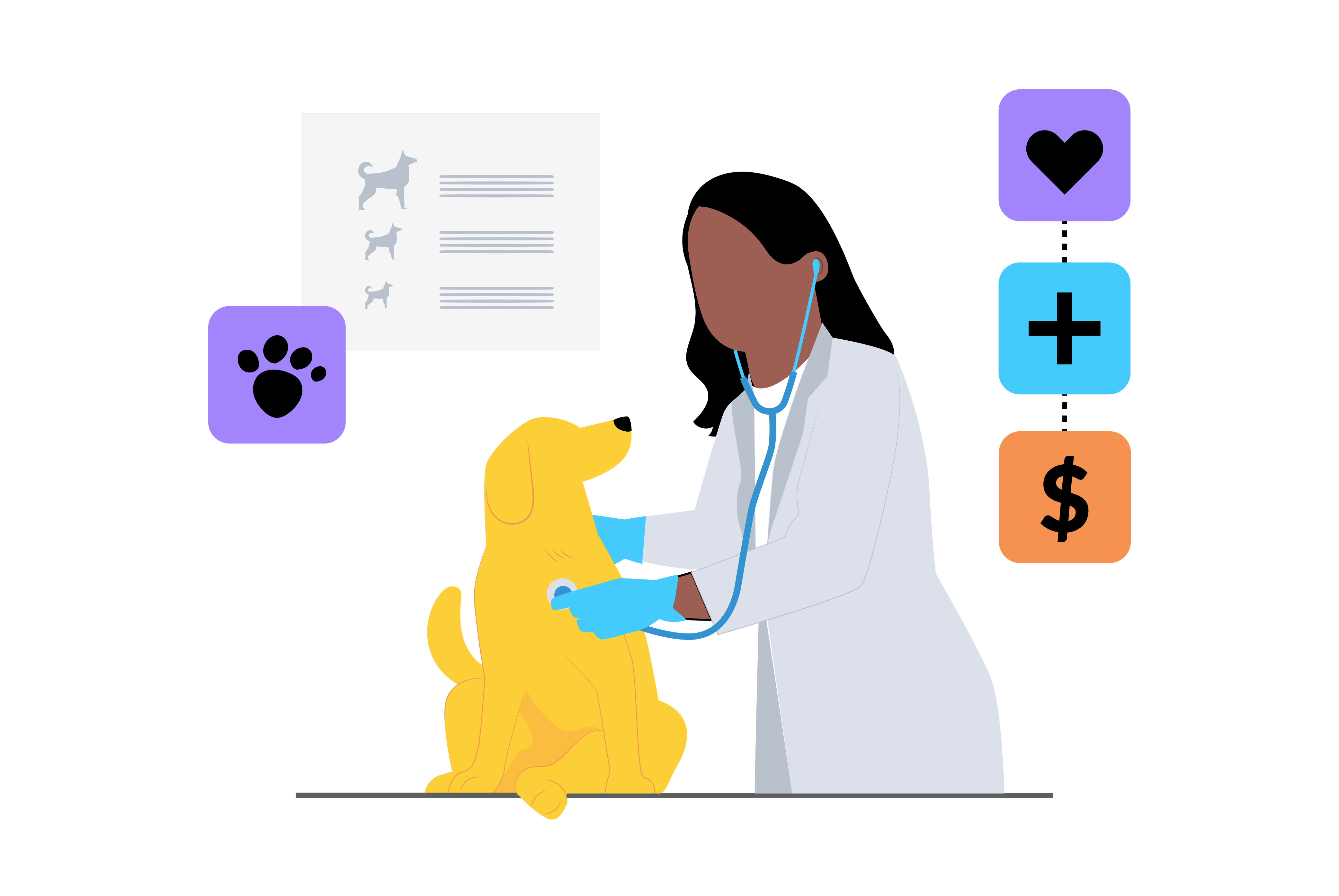Joining the workforce can be rewarding at times, but it can also be exhausting when you realize that you’re not always making the amount you should be making with the experience and education you have. The reason for this is because there are some jobs that are in higher demand than other jobs and your “dream job” may not be one of them or may be phasing out altogether.
Over the years, the advancement of technology has made some jobs and careers completely obsolete such as switchboard operators or video store clerks, but it has also created all types of new jobs including solar photovoltaic installers and software developers. As time passes on, there are some careers that will no longer be useful with the advancement of society. At the same time, there are lots of jobs that are growing higher in demand. While some of these positions offer higher salary pay, others offer security in knowing that your job will still be needed as time goes on.

Jobs of 2019
It’s no secret that people in the medical field make lots of money. A few reasons for this are because that they’re always needed, not a lot of people choose to go into the field and because the stress levels for these jobs are significantly higher than other careers. These job and career opportunities often times require higher education, but with the potential salary and benefits that each job brings more and more people are choosing to get their secondary education degrees in order to lock in these high paying positions.
Highest Paying Jobs of 2019
Most, if not all, doctors and medical professionals choose to go into this field to help others, but the salary is also a great incentive because the top five highest paying jobs of 2019 are all in the medical field according to US News and World Report and the Bureau of Labor Statistics (BLS). (Salaries over $208,000 are not specified, per the report)
Anesthesiologist
- Median Salary: Greater than $208,000
- Education Needed: Bachelor’s Degree, MCAT, Medical School, Internship, Residency, License to Practice
- Projected Growth by 2026: 15.4%, est. 5,100 jobs
- Current Unemployment Rate: 0.5%
Surgeon
- Median Salary: Greater than $208,000
- Education Needed: Bachelor’s Degree, MCAT, Medical School, USMLE, Residency
- Projected Growth by 2026: 14.4%, est. 6,500 jobs
- Current Unemployment Rate: 0.5%
Oral and Maxillofacial Surgeon
- Median Salary: Greater than $208,000
- Education Needed: Prerequisites Required by Dental School, Dental Admission Test, Dental School, ABOMS Certification
- Projected Growth by 2026: 19.1%, est. 1,300 jobs
- Current Unemployment Rate: 0.5%
Obstetrician and Gynecologist
- Median Salary: Greater than $208,000
- Education Needed: Bachelor’s Degree, MCAT, Medical School, USMLE, Residency
- Projected Growth by 2026: 15.5%, est. 3,400 jobs
- Current Unemployment Rate: 0.5%
Orthodontist
- Median Salary: Greater than $208,000
- Education Needed: Prerequisites Required by Dental School, Dental Admission Test, Dental School, Residency
- Projected Growth by 2026: 19.3%, est. 1,300 jobs
- Current Unemployment Rate: 0.9%
Best Jobs of 2019

Finding a career that makes a lot of money often times comes with an added level of stress and little to no social life or time to spend with your family. Fortunately, not all high-paying jobs have this issue. According to US News and World Report, the following are listed as the five best jobs in the country for 2019. These jobs are ranked by an overall score of components measured by median salary, employment rate, growth and unemployment rates, stress and work-life balance.
Software Developer
- Median Salary: $101,790
- Education Needed: Bachelor’s Degree in Computer Science
- Projected Growth by 2026: 30.7%, est. 255,400 jobs
- Current Unemployment Rate: 0.9%
Statistician
- Median Salary: $84,060
- Education Needed: Bachelor’s Degree in Statistics, Master’s Degree or Higher for Better Opportunity
- Projected Growth by 2026: 33.8% est. 12,600 jobs
- Current Unemployment Rate: 0.9%
Physician Assistant
- Median Salary: $104,860
- Education Needed: Bachelor’s Degree or Experience as a Nurse, EMT or Paramedic
- Projected Growth by 2026: 37.3% est. 39,600 jobs
- Current Unemployment Rate: 0.8%
Dentist
- Median Salary: $151,400
- Education Needed: Prerequisites Required by Dental School, Dental Admission Test, Dental School, Residency
- Projected Growth by 2026: 19.4%, est. 25,700 jobs
- Current Unemployment Rate: 0.9%
Nurse Anesthetist
- Median Salary: $165,120
- Education Needed: Bachelor’s Degree, NCLEX, Critical Care Experience, Nurse Anesthesia Program, Certification
- Projected Growth by 2026: 15.4%, est. 5,100 jobs
- Current Unemployment Rate: 0.5%
Orthodontist
- Median Salary: Greater than $208,000
- Education Needed: Prerequisites Required by Dental School, Dental Admission Test, Dental School, Residency
- Projected Growth by 2026: 19.3%, est. 1,300 jobs
- Current Unemployment Rate: 0.9%

Future Job Predictions
Technology produces new products and services every day. People will always need to have access to healthcare and healthcare professionals. For these reasons, these careers are in higher demand than others. While tech jobs and careers might be the most in demand right now, there are also other careers tracks and fields that are continuing to increase in momentum and are growing at a rapid rate. The following tables list the top ten occupations in categories of job growth and decline according to the Bureau of Labor and Statistics.
Most Job Growth Predictions from 2016 to 2026
| Occupation | 2016 Employment | Proj. 2026 Employment | Change | Median Salary |
|---|---|---|---|---|
| Personal care aides | 2,016,100 | 2,793,800 | 777,600 (+38.6%) | $24,020 |
| Combined food preparation and serving workers, including fast food | 3,452,200 | 4,032,100 | 579,900 (+16.8%) | $21,250 |
| Registered nurses | 2,955,200 | 3,393,200 | 438,100 (+14.8%) | $71,730 |
| Home health aides | 911,500 | 1,342,700 | 431,200 (+47.3%) | $24,200 |
| Software developers, applications | 831,300 | 1,086,600 | 255,400 (+30.7%) | $103,620 |
| Janitors and cleaners, except maids and housekeeping cleaners | 2,384,600 | 2,621,200 | 236,500 (+9.9%) | $26,110 |
| General and operations managers | 2,263,100 | 2,468,300 | 205,200 (+9.1%) | $100,930 |
| Laborers and freight, stock, and material movers, hand | 2,628,400 | 2,828,100 | 199,700 (+7.6%) | $28,260 |
| Medical assistants | 634,400 | 818,400 | 183,900 (+29%) | $33,610 |
| Waiters and waitresses | 2,600,500 | 2,783,000 | 182,500 (+7%) | $21,780 |
Fastest Growing Occupations from 2016 to 2026
| Occupation | 2016 Employment | Projected 2026 Employment | Change | Median Salary |
|---|---|---|---|---|
| Solar photovoltaic installers | 11,300 | 23,100 | 11,800 (+104.9%) | $42,680 |
| Wind turbine service technicians | 5,800 | 11,300 | 5,600 (+96.3%) | $54,370 |
| Home health aides | 911,500 | 1,342,700 | 431,200 (+47.3%) | $24,200 |
| Personal care aides | 2,016,100 | 2,793,800 | 777,600 (+38.6%) | $24,020 |
| Physician assistants | 106,200 | 145,900 | 39,600 (+37.3%) | $108,610 |
| Nurse practitioners | 155,500 | 211,600 | 56,100 (+36.1%) | $107,030 |
| Statisticians | 37,200 | 49,800 | 12,600 (+33.8%) | $87,780 |
| Physical therapist assistants | 88,300 | 115,800 | 27,400 (+31.0%) | $58,040 |
| Software developers, applications | 831,300 | 1,086,600 | 255,400 (+30.7%) | $103,620 |
| Mathematicians | 3,100 | 4,000 | 900 (+29.7%) | $101,900 |
Largest Job Declines from 2016 to Projected 2026
| Occupation | 2016 Employment | Projected 2026 Employment | Change | Median Salary |
|---|---|---|---|---|
| Secretaries and administrative assistants, except legal, medical, and executive | 2,536,200 | 2,371,300 | -164,900 (-6.5%) | $36,630 |
| Team assemblers | 1,130,900 | 985,900 | -145,000 (-12.8%) | — |
| Executive secretaries and executive administrative assistants | 685,300 | 566,200 | -119,200 (-17.4%) | $59,340 |
| Inspectors, testers, sorters, samplers, and weighers | 520,700 | 465,200 | -55,500 (-10.7%) | $38,250 |
| Electrical and electronic equipment assemblers | 218,900 | 173,300 | -45,600 (-20.8%) | — |
| Data entry keyers | 203,800 | 160,600 | -43,300 (-21.2%) | $32,170 |
| Tellers | 502,700 | 460,900 | -41,800 (-8.3%) | $29,450 |
| Postal service mail carriers | 316,700 | 278,500 | -38,200 (-12.1%) | $55,210 |
| Legal secretaries | 194,700 | 157,500 | -37,100 (-19.1%) | $46,360 |
| Correctional officers and jailers | 450,000 | 415,500 | -34,500 (-7.7%) | $44,330 |
Fastest Declining Occupations from 2016 to Projected 2026
| Occupation | 2016 Employment | Projected 2026 Employment | Change | Median Salary |
|---|---|---|---|---|
| Locomotive firers | 1,200 | 300 | -900 (-78.6%) | $63,820 |
| Respiratory therapy technicians | 10,800 | 4,700 | -6,100 (-56.3%) | $51,210 |
| Parking enforcement workers | 9,400 | 6,100 | -3,300 (-35.3%) | $39,840 |
| Word processors and typists | 74,900 | 50,100 | -24,800 (-33.1%) | $39,750 |
| Watch repairers | 1,800 | 1,200 | -500 (-29.7%) | $39,910 |
| Electronic equipment installers and repairers, motor vehicles | 12,100 | 9,000 | -3,100 (-25.6%) | $35,590 |
| Foundry mold and coremakers | 12,500 | 9,500 | -3,000 (-24.0%) | $35,430 |
| Pourers and casters, metal | 8,400 | 6,500 | -2,000 (-23.4%) | $37,730 |
| Computer operators | 51,500 | 39,700 | -11,800 (-22.8%) | $45,840 |
| Telephone operators | 9,100 | 7,000 | -2,000 (-22.6%) | $37,240 |
Benefits

According to the U.S. Bureau of Labor Statistics, “Legally required benefits provide workers and their families with retirement income and medical care, mitigate economic hardship resulting from loss of work and disability, and cover liabilities resulting from workplace injuries and illnesses.” These benefits include Social Security, Medicare, federal and state unemployment insurance, and workers’ compensation. Employers with 50 or more employees are also required to offer health insurance to employees and their dependents. Some companies also offer voluntary benefits such as stock options, disability insurance, life insurance, 401(k) retirement plans, education assistance, wellness programs and child care assistance. Paid leave is mandatory in certain states, but it is not required under federal law.
Benefit Trends of 2019
Over time, benefits packages have increased in order to keep and attract new employees. Larger companies are now offering incentive packages to their employees that focus on providing them with better health and mental care, telemedicine and remote therapy, and options to choose and create plans that are tailored to their specific needs.
Health and Mental Care Options
- Telemedicine – Gaining popularity in 2018, the option of telemedicine has started to become available to employees. Now instead of physically visiting a doctor’s office, you can log onto a virtual doctor via mobile or computer and video chat with them for your health and mental care related issues.
- Better access to behavioral and emotional health services – Benefits specialists anticipate that this access will increase in 2019. Employers will now begin to offer more counseling options for employees that deal with stress, anxiety and addiction issues.
- Direct contracting with healthcare providers – Employers will begin to focus on improving access to better quality and lower-cost care for employees. This saves the employers money by cutting out the “middle man” administrators that don’t care to keep costs low and take a large percentage of premiums.
Employee-Friendly Options
- Paid Family Leave – Companies are beginning to add or increase their maternal and paternal leave options to employees to help them ease back into the workplace after the birth of their child. It isn’t required by federal law, but some states including New York and California are now requiring mandatory parental leave options and certain employers are starting to do the same.
- Student Loan Repayment – With student loan debt reaching an all-time high, employers are now offering incentives to pay down those debts with repayment benefits. Millennials are graduating with mountains of student loan debt and are more interested in companies that will help them pay the loans off.
- Benefits Technology. Employers are starting to get rid of their paper applications and move towards online human resource platforms, which makes it easier to sign up for benefits. These platforms will be used to give better meaning to what certain healthcare plans offer and helps employees understand exactly what they’re signing up for.
Personalized Plans – Employees will have the option to create a personalized plan that’ll benefit their needs rather than selecting a general plan that may or not be suitable for them. Employers will begin to offer more creative options to attract and retain employees.
Future Benefits Projections
Currently sitting at about 35%, it is projected that millennials will take up almost half of the workforce by the year 2020. With older baby boomer workers heading closer to retirement, companies are shifting their focuses and changing the way benefits packages are offered to the younger generation. One way that companies will try to cater to millennials is by going mobile. Young Americans spent most of their online time on their mobile devices, so turning to benefit-related text messages or alerts and mobile access to benefits information would be ideal for people that are on their phones most of the day anyway. Embracing technology will be essential in providing the types of benefits that the younger generation will want and gravitate towards.
Voluntary benefits that were once unheard of are starting to gain a little traction and in future years they’ll be more common than ever. Some of these benefits include: gender reassignment and transformation assistance, caregiver leave, free life coaching, free beer, free lunch and pet bereavement periods. Millennials will be the new “modern day employee” so creating packages around them and their needs will become the new standard in benefits packages in future years to come.
Sources
https://data.bls.gov/projections/occupationProj
https://money.usnews.com/careers/best-jobs/anesthesiologist
https://money.usnews.com/careers/best-jobs/dentist
https://money.usnews.com/careers/best-jobs/nurse-anesthetist
https://money.usnews.com/careers/best-jobs/obstetrician-and-gynecologist
https://money.usnews.com/careers/best-jobs/oral-and-maxillofacial-surgeon
https://money.usnews.com/careers/best-jobs/orthodontist
https://money.usnews.com/careers/best-jobs/physician-assistant
https://money.usnews.com/careers/best-jobs/software-developer
https://money.usnews.com/careers/best-jobs/statistician
https://www.bls.gov/emp/tables/fastest-declining-occupations.htm
https://www.bls.gov/emp/tables/fastest-growing-occupations.htm https://www.bls.gov/emp/tables/occupations-largest-job-declines.htm
https://www.bls.gov/emp/tables/occupations-most-job-growth.htm
https://www.bls.gov/opub/btn/archive/program-perspectives-on-legally-required-benefit-costs-pdf.pdf
https://www.hrmorning.com/articles/benefits-package-future/
https://www.paychex.com/articles/employee-benefits/employee-benefits-a-company-must-provide
https://www.shrm.org/resourcesandtools/hr-topics/benefits/pages/big-benefit-trends-2019.aspx
https://www.tritonhr.com/blog/what-are-the-2019-trends-in-employee-benefits/





